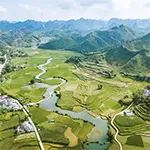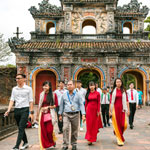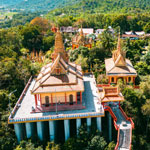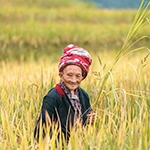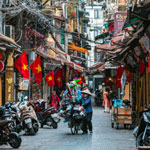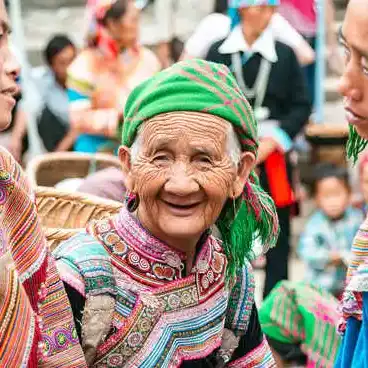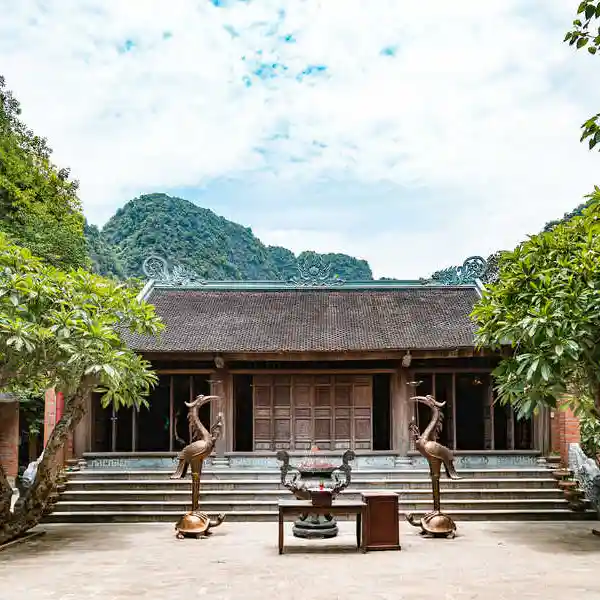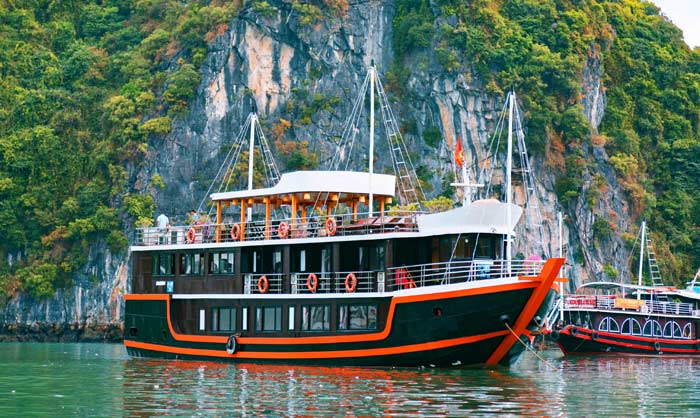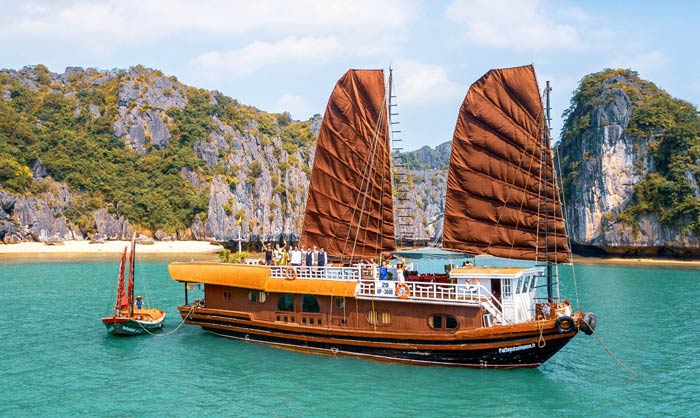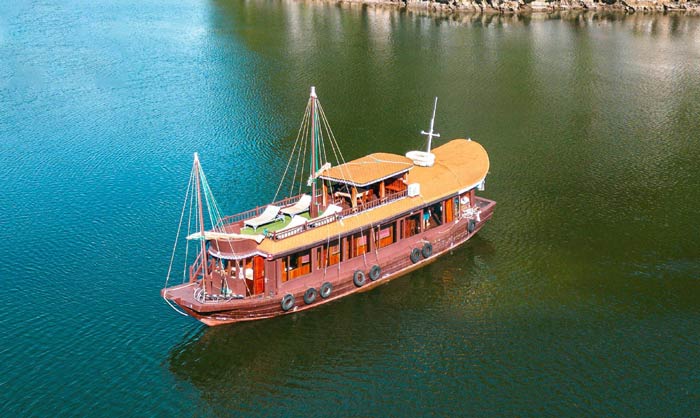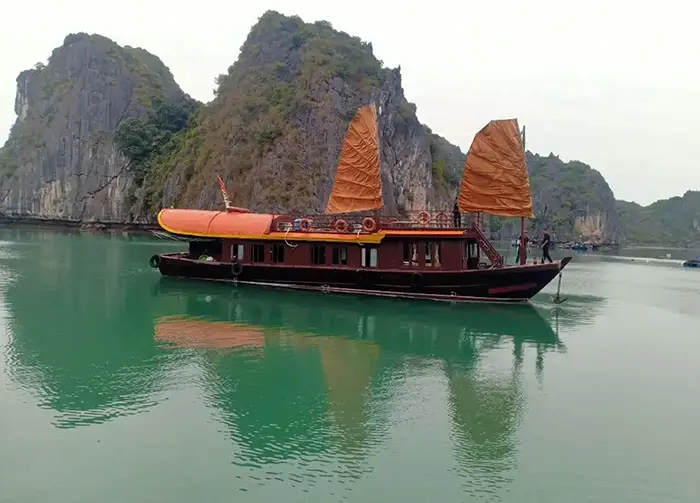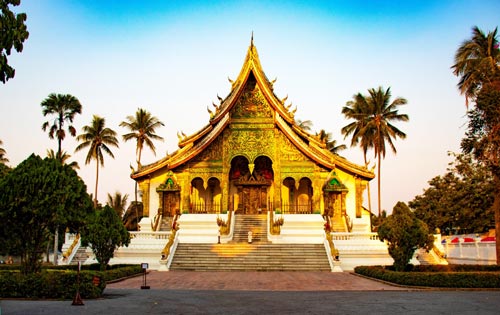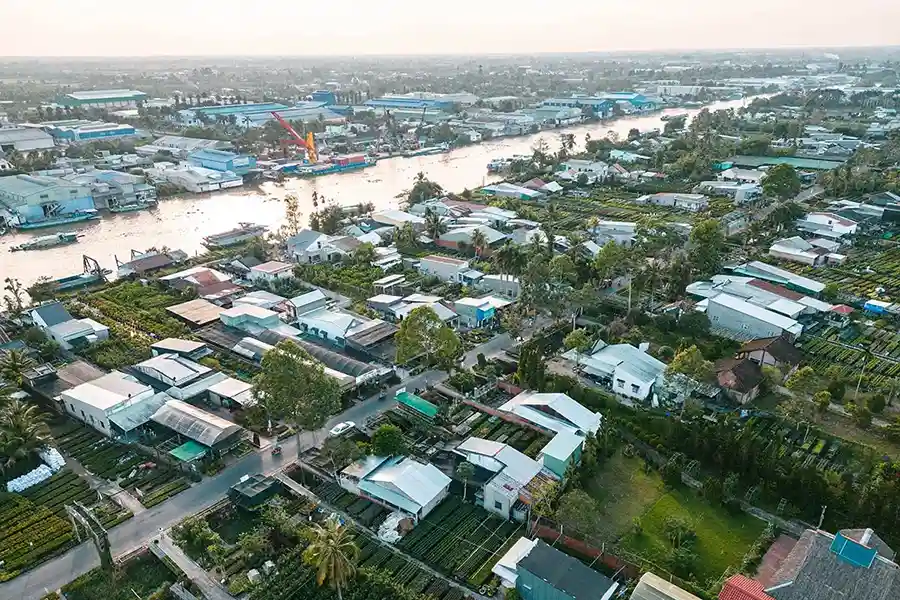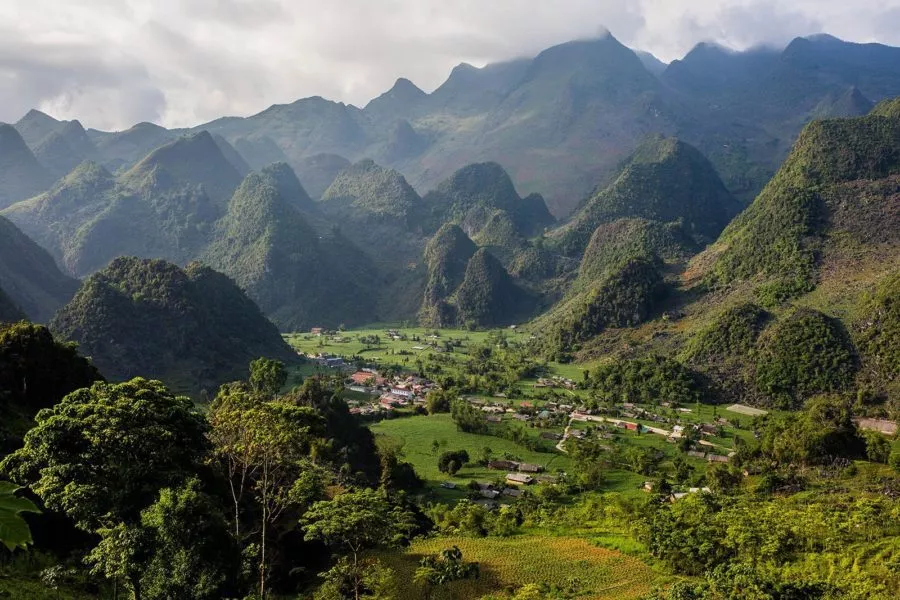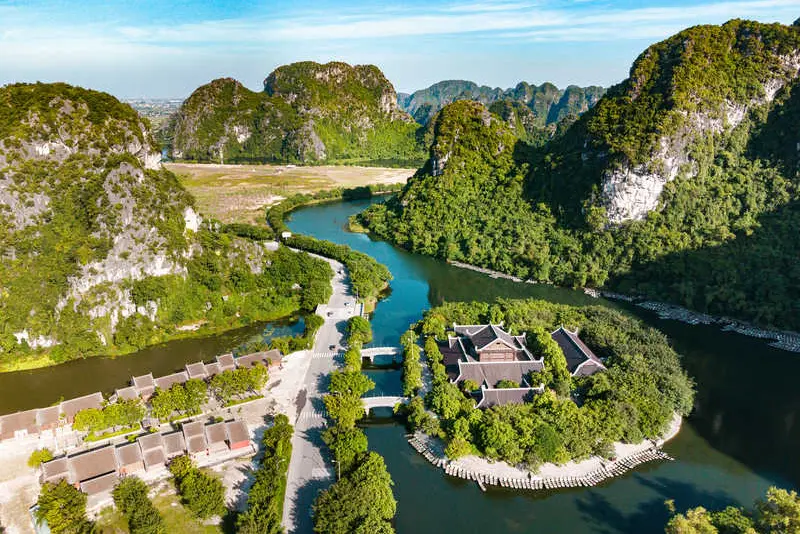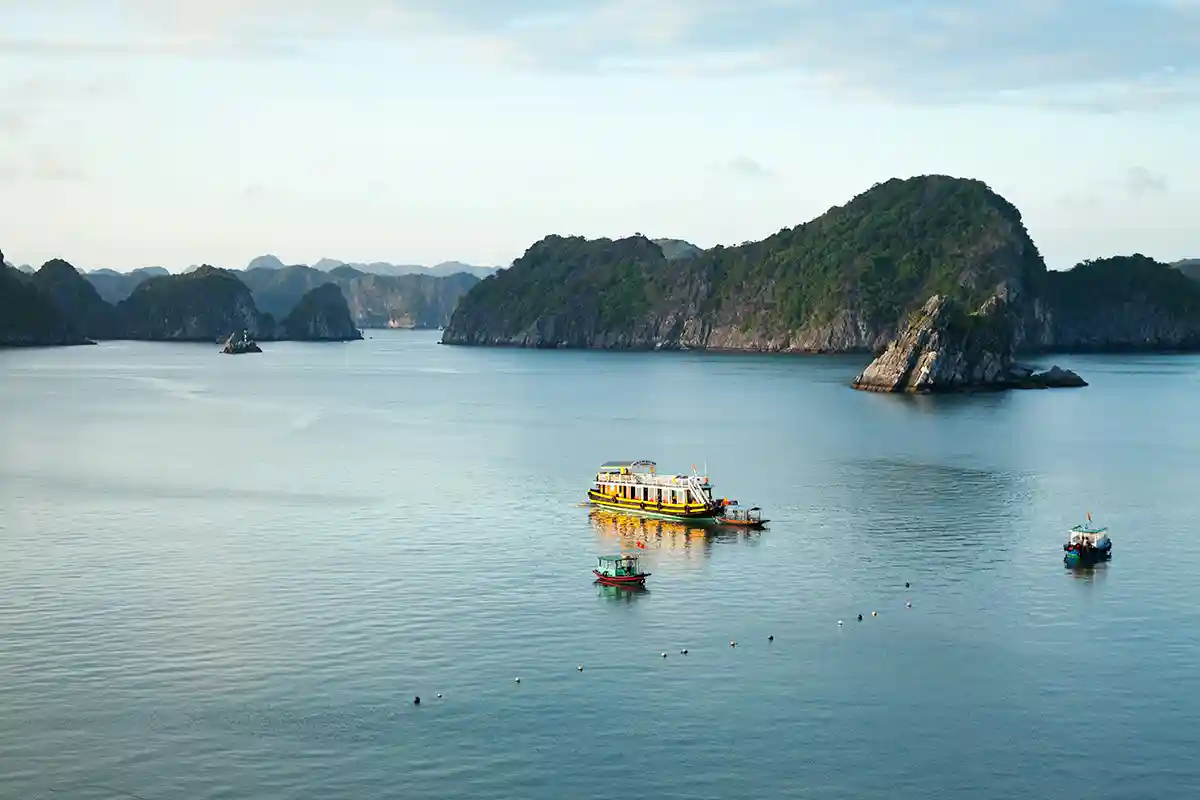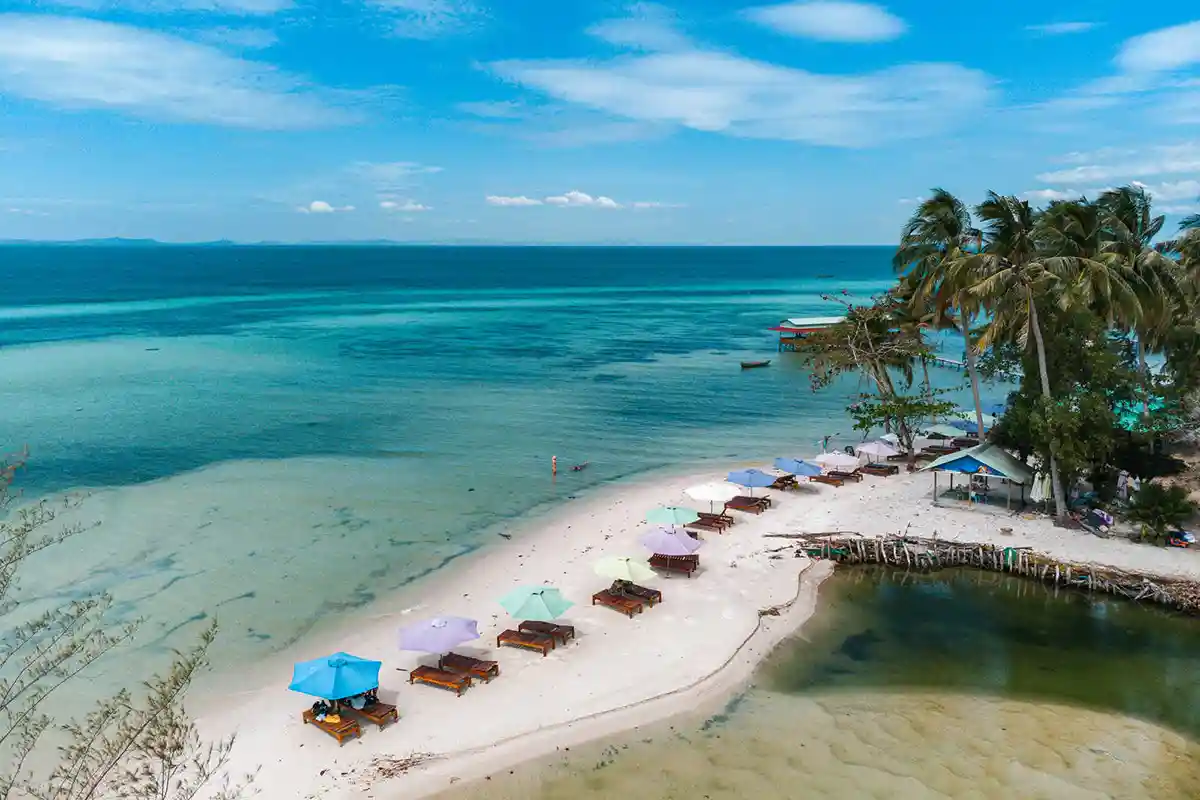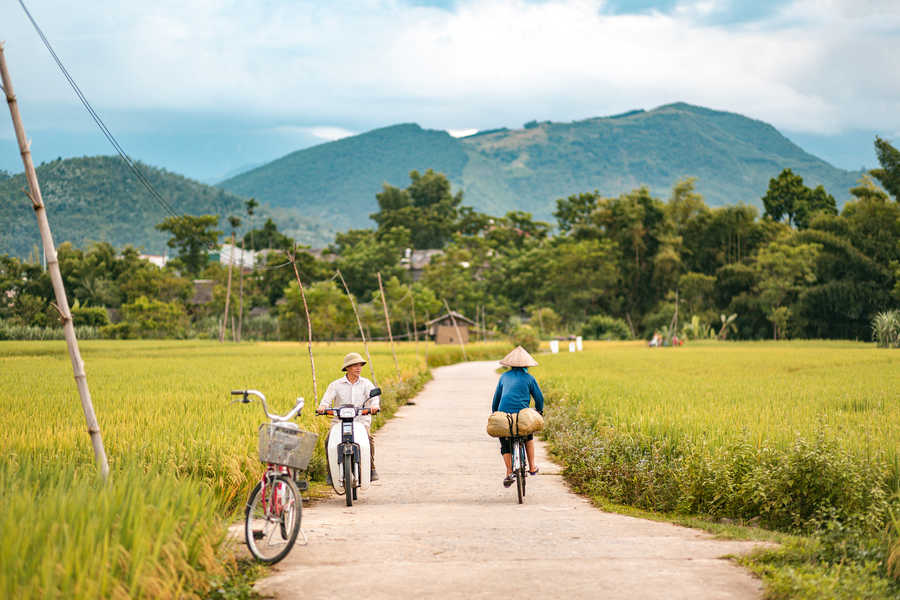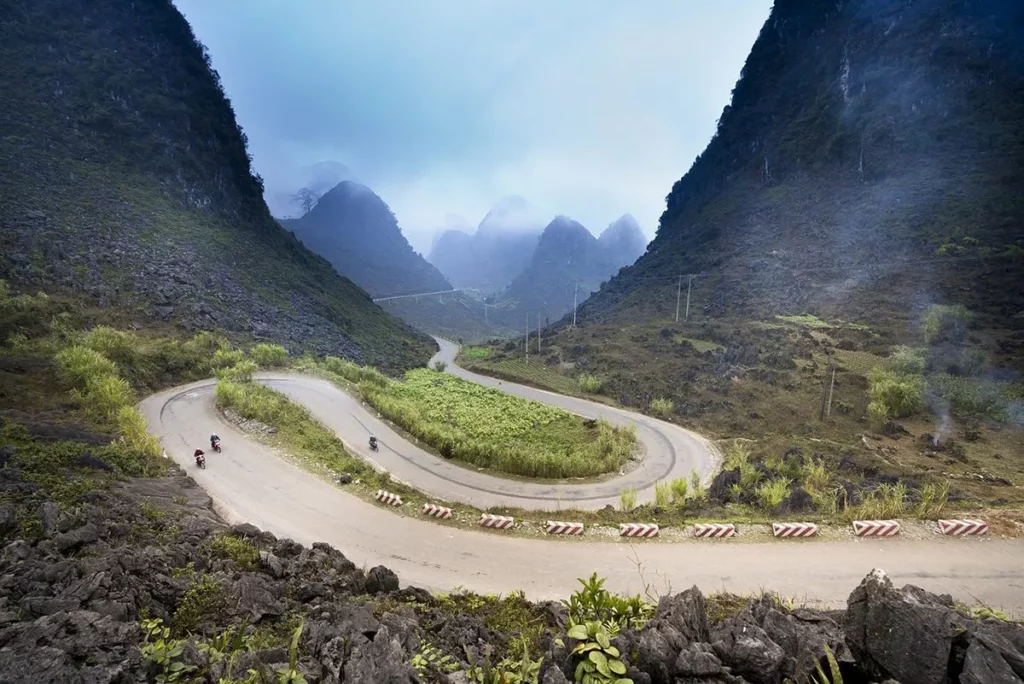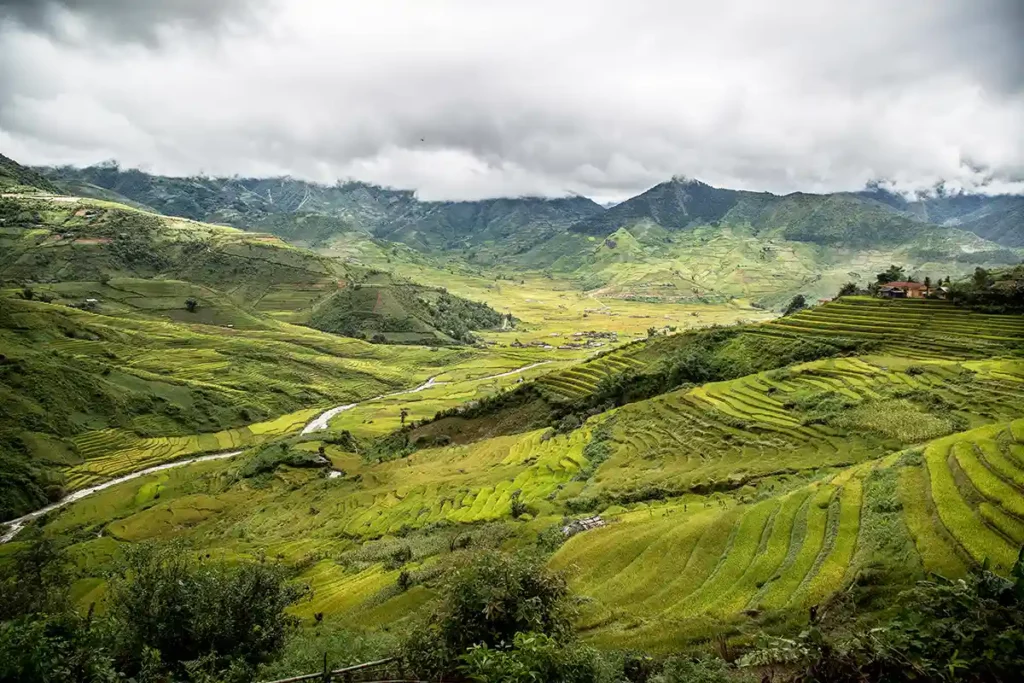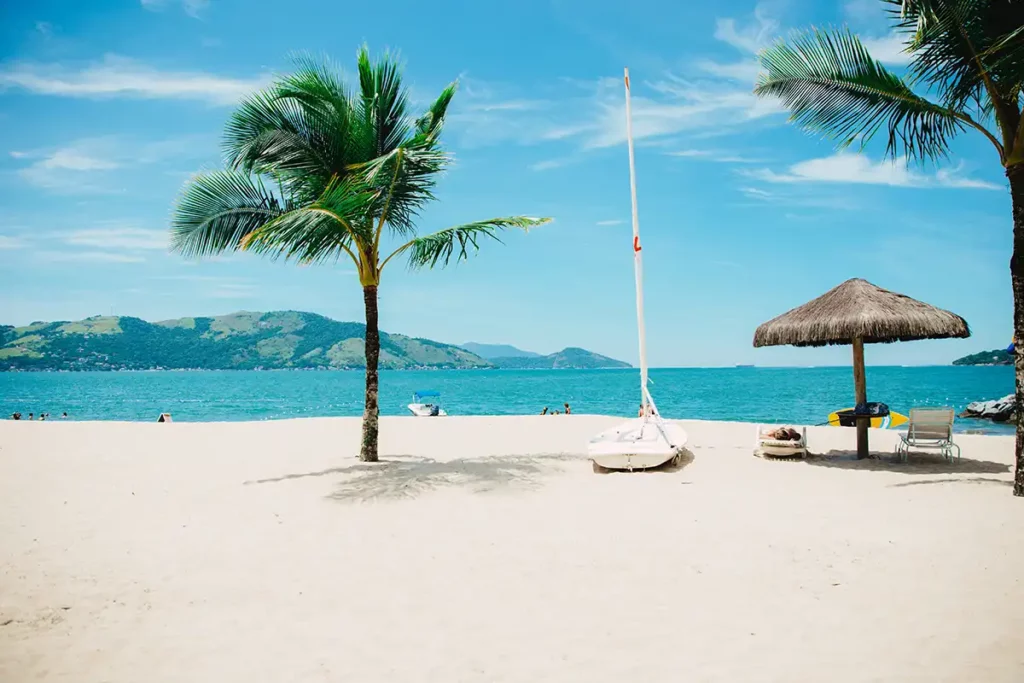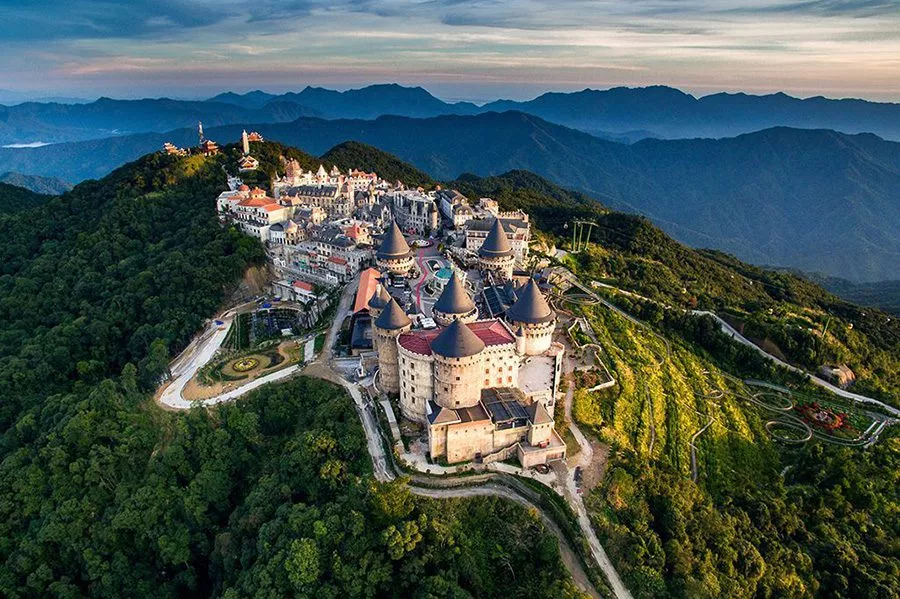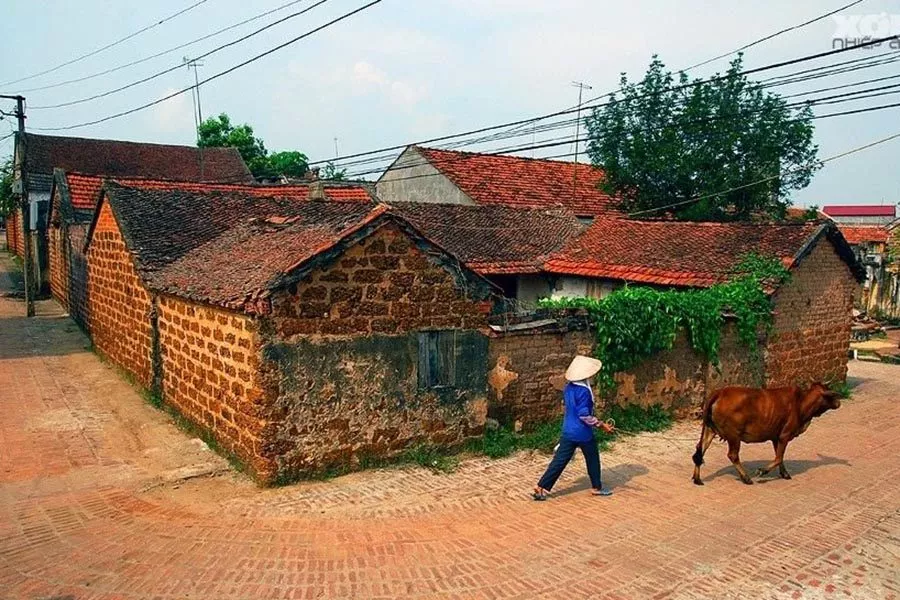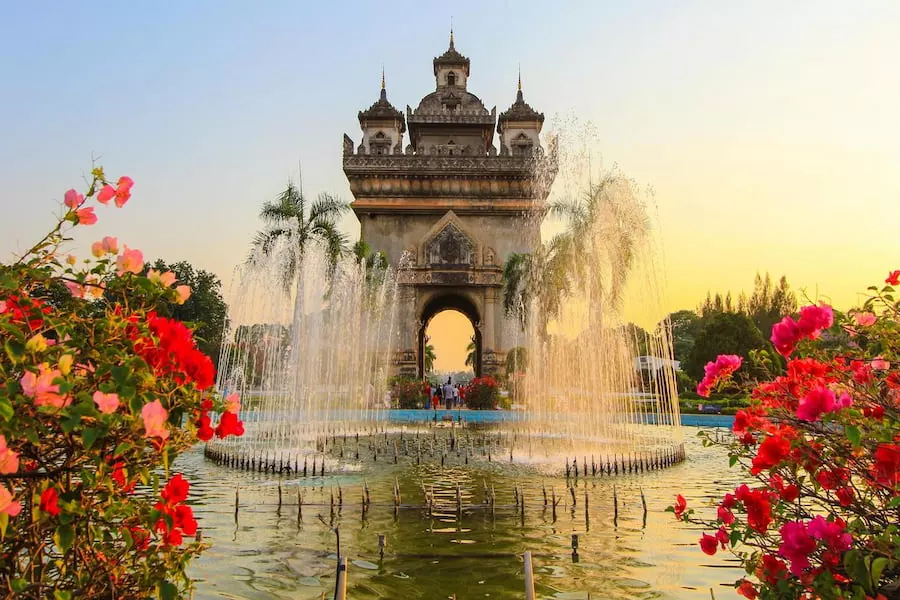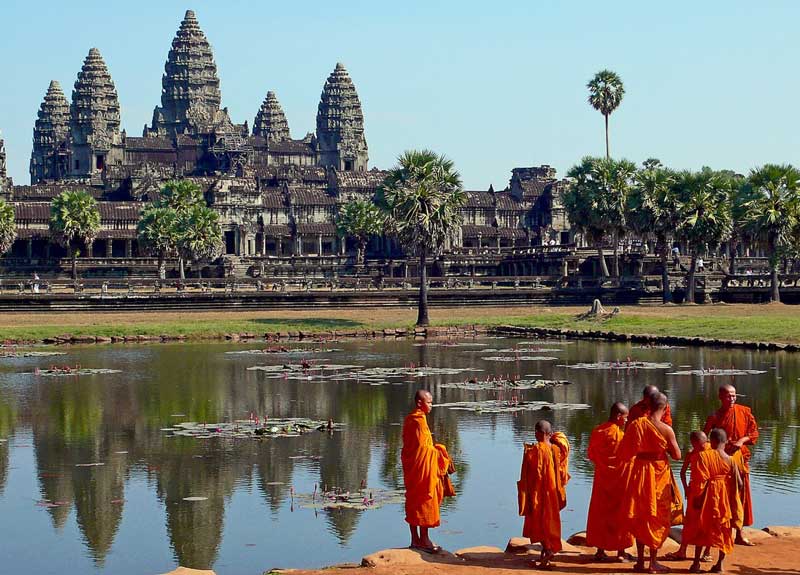Sadec is a charming small town in Dong Thap Province, located in the Mekong Delta.
The town is not among the must-see stops in the Mekong Delta, but for those who take the time to explore the region, it makes for a very pleasant stop.
Don’t hesitate to contact us to help you organize your stay in the Mekong Delta.
Sadec, the charm of an old colonial town
Marguerite Duras spent several years of her youth in Sadec, where her mother ran a girls’ school. It was also in this region that she first met her “lover”:
“It was during the crossing of a branch of the Mekong on the ferry between Vinh Long and Sadec, in the great plain of mud and rice in southern Cochinchina, the land of birds.”
(The Lover, Marguerite Duras)
Beyond this romantic and literary connection — which particularly appeals to French travelers — the town has a delightful, laid-back atmosphere. There is a lively and authentic market near the river and much colonial-era architecture, including the old market hall and many merchants’ houses and mansions. One of these houses actually belonged to the family of Marguerite Duras’ lover, and it is open to visitors today. Nguyen Hue Street, along the riverbank, invites you to stroll among its cafés, market stalls, and the old French church in the background.
In the center of Sadec stands Kien An Chung Temple, with its rich history — it once served as a prison — and is now back in private family ownership. The Phuoc Hung Pagoda, built by the Chinese community, once served as a local meeting center.
Finally, Sadec is best known among Vietnamese travelers for its flower village, which comes alive before Tết, the Lunar New Year.
How to get to Sadec?
Sadec is located about 150 kilometers from Ho Chi Minh City, which takes around 3 hours by bus. For those living in the southern metropolis, it’s the perfect destination for a relaxing weekend getaway. For other travelers passing through, you can easily combine Sadec with another destination, such as Can Tho.
To get to Sadec, wherever you are, we recommend booking with Phuong Trang (Futa), a reputable and reliable bus company. From Can Tho, you’ll need to go to the bus station where the company’s offices are located. The trip takes around 1 hour and 30 minutes to reach Sadec.
The best time to visit
As with the rest of the Mekong Delta, we recommend visiting between December and March, during the dry season. It rarely rains during this period, and the temperatures are mild — sometimes even cool in the mornings and evenings. This is especially true for Sadec, which becomes particularly lively from late December to late January, in the weeks leading up to the Vietnamese New Year (Tết).
What to do in Sadec?
Visit the Flower Village (Làng hoa)
The Sa Dec Flower Village, known in Vietnamese as Làng hoa, originally came from Tan Quy Dong, a traditional craft village over 100 years old. Located on the fertile banks of the Tien River, the village has long enjoyed a fine reputation for its ornamental flowers.
Today, the total flower cultivation area covers more than 500 hectares, with over 2,000 different species of ornamental flowers. Around 2,300 households make their living from this trade year-round.
Over the years, techniques have naturally evolved, and more and more new and rare flowers have appeared. What makes this village unique compared to other flower-producing areas is that the flowers are grown on tall trellises to cope with the rising canal waters. During the rainy season, villagers even come to inspect their flowers by sampan!
Thanks to their long experience, solid reputation, and advances in science and technology, Sa Dec’s ornamental flower growers are now recognized internationally. Their flowers are exported to Laos, Cambodia, Thailand, and even China.
If you’re traveling independently, the place (Làng hoa) is clearly marked on Google Maps, so you’ll have no trouble finding it. There’s now a welcome archway at the entrance to the main street, Sa Nhien. For over two kilometers, flower beds line both sides of the road. You can stop anywhere and take a closer look at your leisure. Some locals have also created small tourist parks, where you can stroll around for a modest entrance fee.
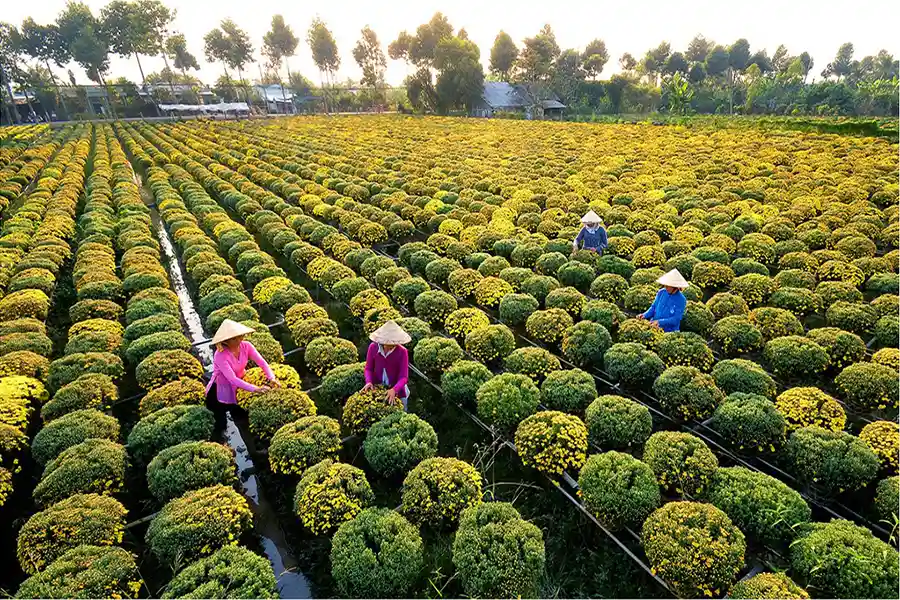
Aerial view of Sa Dec Flower Village. Photo credit: Mathieu Arnaudet
Visit the Huynh Thuy Le House — the lover of Marguerite Duras
The Huynh Thuy Le Ancient House was built in 1895 by Huynh Cam Thuan, the father of Huynh Thuy Le — known as the lover of the French writer Marguerite Duras — in a bustling commercial area along the Sa Dec River. At the time, Mr. Thuan was a well-known Chinese merchant. Upon his father’s death, Le inherited the house and renovated it in 1917. After Le’s death in 1972, his wife and children moved abroad, leaving the house unused. It became a government office in 1975 and has since been restored as a tourist attraction.
The house features three rooms typical of the architectural style of southwestern Vietnam. The outer room served both as a guest room and ancestral altar, while the others were used as bedrooms. From the outside, the house resembles a French colonial villa, but the interior reflects traditional Chinese architecture. Its roof is curved at the corners, similar to northern pagoda designs, and although the house is not large, it is furnished with luxurious wooden furniture and ornate decorations.
Today, the Huynh Thuy Le House is forever linked to Marguerite Duras’s famous novel The Lover and its film adaptation by Jean-Jacques Annaud, which tells the story of a secret love affair between Duras and Le. Their romance was opposed by Le’s father, who considered it a social mismatch. When Marguerite returned to France for her studies, their relationship ended after 18 months. The Lover was written 50 years later and won the 1984 Prix Goncourt, France’s most prestigious literary award.
You can also admire other beautiful old houses by strolling along Nguyen Hue Street.
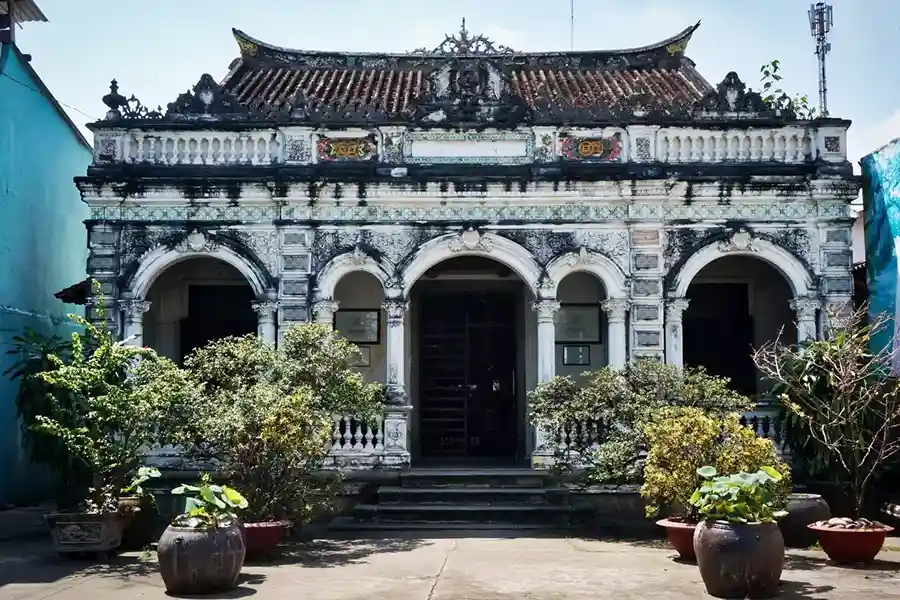
Huynh Thuy Le Ancient House – Photo credit: Mathieu Arnaudet
Stroll through the Sa Dec Market (Chợ Thực phẩm Sa Đéc)
Like every town, Sa Dec also has its own market. This is a major wholesale market in the region, with goods arriving from all over southern Vietnam and even from neighboring countries.
The main market building was constructed at the end of the 19th century, featuring a solid steel frame and a unique architectural style infused with Eastern culture while incorporating selected Western elements. The building was restored at the end of the 20th century, but in a way that preserved its original charm. Today, it stands as one of Sa Dec’s most significant architectural landmarks, and it’s refreshing to see that it hasn’t yet been covered in advertising signs!
Religious Buildings from the Chinese Period
Sa Dec is also renowned for its spiritual architecture — so much so that some say, “Sa Dec is the land of Buddha.” While traveling through the city, don’t be surprised to see several of the 50 large and small temples scattered around. Among them, two are particularly worth visiting: Phuoc Hung Co Tu Pagoda and Kien An Cung Pagoda.
Phuoc Hung Co Tu Pagoda, also known as the Pagoda of Perfumes (short for Minh Huong Pagoda), is located at 461 Hung Vuong Street, right in the heart of the city. Its highly intricate architecture is closely tied to the emergence of Buddhism in ancient Sa Dec around 300 years ago. The pagoda was built in 1838 by a group of Chinese immigrants from the Minh Huong Association. Over time, it has been overseen by six generations of abbots, each leaving their mark on both local life and the temple’s architecture.
In 1854, the Venerable Minh Phuoc expanded the eastern and western corridors.
In 1882, the Venerable Nhu Dieu restored the main hall.
In 1919, the Venerable Van Hien printed Buddhist sutras (Kim Cang, Pho Mon, and Ji) in Chinese characters carved on wood.
In 1962, the Venerable Vinh Dat led major restoration works, including the reconstruction of the Tay Lang Hall, the construction of the Quan Am Station, and a triple-arched entrance gate.
From 1987, the Venerable Thich Thien Hue continued restoration efforts, building the Dong Lang Hall and the primary Buddhist school hall of Dong Thap.
Today, the pagoda features eight roofs arranged on two levels, covered with traditional yin-yang tiles reminiscent of ancient temples. It is surrounded by ornate reliefs of plants, flowers, birds, and the four sacred creatures — Dragon, Lan (Unicorn), Qui (Turtle), and Phung (Phoenix) — all harmoniously combined in a classic Chinese style.
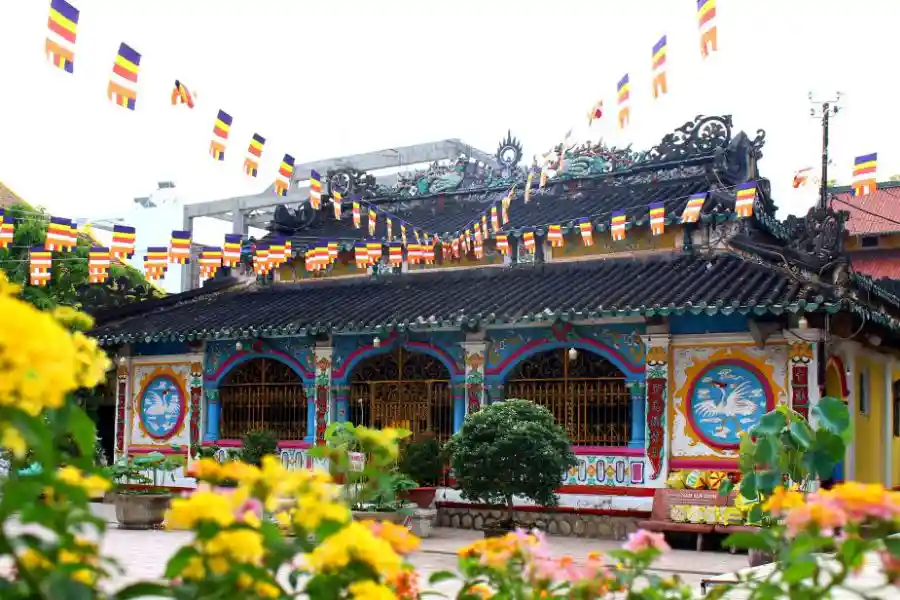
Phuoc Hung Co Tu Pagoda, Sa Dec
Another important site built by the Chinese community is Kien An Cung Pagoda, located in Quarter 2, in the city center. Construction began in 1924 and was completed three years later. Thanks to its unique architectural design, Kien An Cung has become an important spiritual and cultural attraction.
According to historical records, from its very beginnings, Kien An Cung served not only as a place of worship but also as a meeting point for Chinese settlers establishing themselves in the Dong Thap province. After nearly a century of existence, it still holds a central role in the spiritual life of Sa Dec’s local Chinese community.
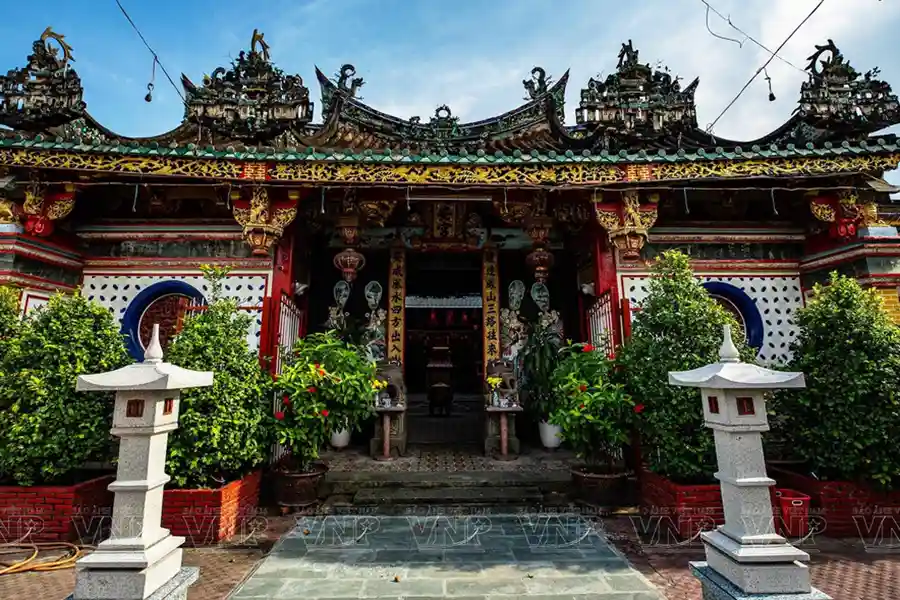
Kien An Cung Pagoda, Sa Dec
Visit the historical and natural site of Xeo Quyt
Located about 15 kilometers from Sa Dec, Xeo Quyt was the revolutionary base (from 1960 to 1975) of the Dong Thap Provincial Party Committee, which led the local resistance against the United States during the war.
Recognized as a national historical relic in 1992, Xeo Quyt is a fascinating destination that combines historical discovery with immersion in the local tropical jungle. Visitors can explore the site on foot by following the wooden walkway built above the mangrove — a walk of about 2 kilometers. Alternatively, for around 25,000 VND per person (about 1 euro), you can take a 20-minute sampan ride through the lush canals.
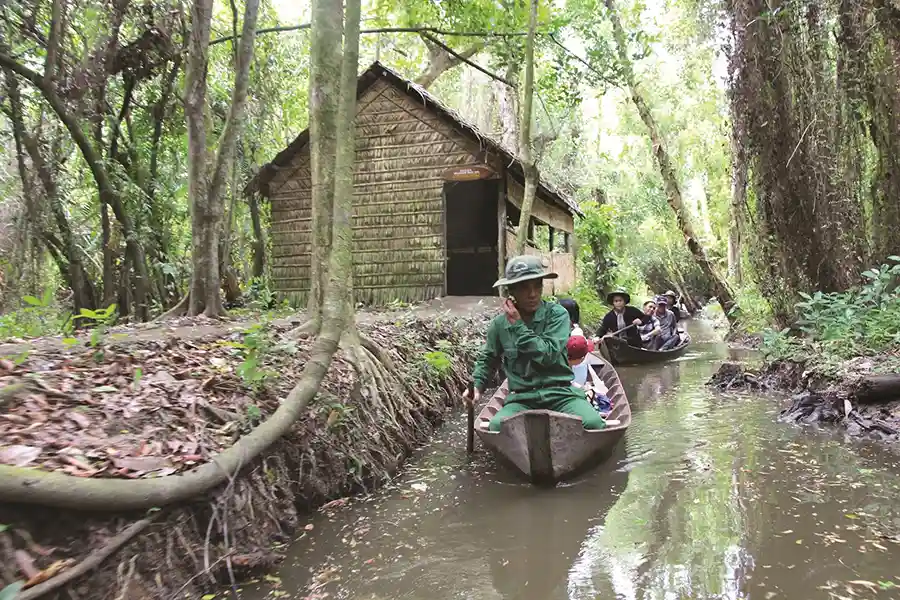
The historical and natural site of Xeo Quyt. Photo credit: Mathieu Arnaudet
This walk through Xeo Quyt gives you the chance to explore a rich primeval forest while gaining insight into the harsh living conditions of Vietnamese soldiers during the war, who hid deep in the forest to avoid air raids. Along the path, you’ll see bamboo huts and reconstructions of wartime shelters, each providing information about how the resistance was organized.
Right next to the historical site, there is also a 25-hectare park for those wishing to enjoy the tranquility of the area. It features picnic areas, canals, rice fields, and lotus ponds. On weekends, the park often hosts folkloric games and educational activities for young visitors.
Where to stay in Sa Dec?
There aren’t many hotel options in Sa Dec, so we recommend opting for authenticity by staying at Phong’s Bamboo House, located in the Flower Village, a bit away from the city’s hustle and bustle. Phong, a French-speaking math teacher, built the bamboo accommodations himself and mainly welcomes French-speaking travelers.
A little note, however: Phong is somewhat strict about simplicity — so don’t expect air conditioning or hot water during your stay! His wife takes care of the home-cooked meals, and you’ll be delighted by her delicious dishes. You can also rent a motorbike on-site, which is very convenient for exploring the surrounding area.
Now you know how to make your stay in Sa Dec!

